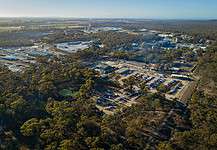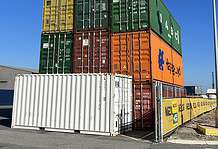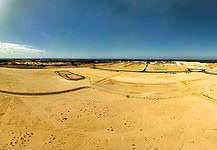All images: Hillgrove Resources.
BY ELIZABETH FABRI
AFTER a near death experience in 2016, Hillgrove Resources is on the rise with company finances looking healthier and a number of growth opportunities on the horizon.
Two years ago, Hillgrove Resources was in financial distress as it struggled to overcome cash shortfalls during a significant downturn in the copper market and underperformance at its flagship Kanmantoo mine.
During the $70 million cutback of Kanmantoo the company’s financial position left it with no choice but to restructure costs, which included a 10 per cent wage deferral, and renegotiated contract and creditor arrangements.
Hillgrove Resources Kanmantoo general manager Lachlan Wallace, who headed up the mine during this time, said 2016 was a challenging year.
“We had confidence that we would be able to work through it, and instigated a number of initiatives to defer cash outflow,” he said.
“We met regularly with executives and the board to ensure we always maintained a solid operation.”
It was not until December 2017 that Hillgrove Resources turned the corner after completing the Kanmantoo cutback.
In December, Kanmantoo produced 1785t of copper; the highest monthly production since 2014.
“We finished the pre-strip and are now mining more ore than the mill can process,” Mr Wallace said.
“[We] have stockpiled in excess of 750,000t over the last three months.
“That transition has enabled us to enter into a cash generative stage of the operation which is enabling the exploration activities to kick off in earnest, prior to the completion of the existing open pit in about 2020.”
Going Underground
Open pit mining is expected to continue for another 12 to 15 months, before the company considers the transition to an underground operation.
“Around the middle of 2019 the mining will wind up,” Mr Wallace said.
“Processing then continues for about another 12 months post that period to process the stockpiles we have on site.”
Kanmantoo’s underground mine would access ore from a number of higher grade copper-gold ore zones that are extensions of the zones mined within the open pit.
The overall target for the underground operation is between 5 million tonnes and 10 million tonnes grading 1.7 to 2.2 per cent copper and 0.4 to 1g/t gold.
If this is achieved Hillgrove could produce a copper production profile similar to current output from the open pit for several years, the company said.
The first of these zones is the Nugent deposit, 180m from the open pit haul road. The Nugent zone has a target of 0.8 to 2 million tonnes grading 1.5 to 2 per cent copper and 1.5 to 2.5 g/t gold.
Mr Wallace said the company hopes to make an early start and begin a small-scale underground operation prior to the open pit closure.
“We have the intent to have the Nugent underground mine up and running prior to the conclusion of the open pit, and the remaining Kanmantoo ore zones in production sequentially thereafter to eventually enable full optimisation of the milling operations post 2020,” he said.
The good news was most of the capital development required to access the new underground target was essentially already completed.
“Effectively the existing haul road with the open pit goes down 360m from surface, so the concept has always been to utilise that haul road as if it was a decline that was already established and paid for by the open cut operation,” Mr Wallace said.
“We also have the processing plant which is established and fully paid off, as well as the tailings dam which was established, permitted and paid off.
“So in terms of critical infrastructure it’s all sitting there ready for a relatively low capital underground exploration development.”
Over the coming months, Hillgrove will continue drilling the various higher grade copper-gold ore zones, including Nugent, to define the down dip extensions of the deposit.

Pumped Hydro
Hillgrove is also currently assessing options to build a pumped hydro energy storage project to utilise a portion of the open pit void when mining winds up.
A summary of the project received considerable interest at the Pumped Hydro Energy Conference in Sydney in March.
Since September last year, the miner has been in discussions with energy investors to progress the opportunity, which in theory could allow the pumped hydro and underground projects to operate simultaneously.
Mr Wallace said the company had received calls from a number of parties looking to potentially invest.
However, there was still design challenges that needed to be addressed given Nugent’s close proximity to the open pit.
“At the moment, we are looking at the viability of mining the underground concurrently with a pumped hydro facility in place,” Mr Wallace said.
“There is a larger crown pillar that has to be left in place to enable the pumped hydro and the underground operations to run concurrently, which removes some of the potential value of an underground mine, and also increases the development costs of any underground operation, but these are not insurmountable.
“We’re looking at the trade-off of running both projects simultaneously versus either project on its own to try and understand what provides best return for shareholders, and our decision will be made on that.
“We have no bias one way nor another with regard to whether its wealth generation through mining or through realisation of the pumped hydro.”

Growth Opportunities
Beyond the underground opportunities at Kanmantoo, Hillgrove plans to develop a series of satellite deposits about 60km from Kanmantoo; Kanappa and Mt Rhine.
In May 2017, Hillgrove chief geologist Peter Rolley outlined a growth plan for the company that could see it not only maintain its copper production profile for the long term but turn it into a sustainable mid-tier copper and gold producer.
Mr Rolley said the Kanappa and Mt Rhine projects were still “a couple of years away from being turned into mining sites”, and the team was scheduled to commence further drilling at the sites in the middle of the year.
“Rock chip sampling has identified peak values of 34 per cent copper and 4 grams per tonne gold at Kanappa, and 13 per cent copper and 49.8g/t gold at Mt Rhine,” Mr Rolley said.
“These are sensational new exploration projects for a totally new mineralisation style in the Kanmantoo area.”
Once developed, the plan would be to truck the material to Kanmantoo and utilise the existing processing and tailings infrastructure.
When asked about mine life for Mt Rhine and Kanappa, Mr Rolley said it was still too early to tell, but he remained positive.
“I’m an exploration geologist so I put my optimistic hat on and believe it is similar to Kanmantoo,” he said.
“We’ve been operating here as an open pit for about seven years and we hope the underground goes for another 10 years thereafter, and that’s the kind of model we will look at achieving at both Kanappa and Mt Rhine.
“It’s quite a great time to be part of the organisation with these developments happening.
“I think everyone is quite excited about moving forward.”






















































